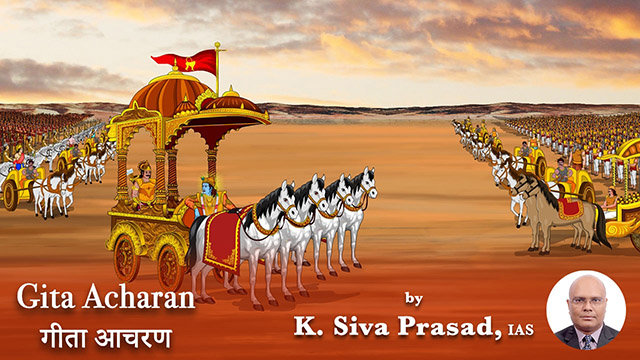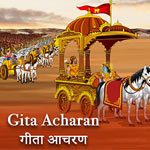
When we (knower) see a flower (object of knowledge) we take in its colour, smell (knowledge) etc. This situation induces an action. A poet would write poetry describing the flower's beauty. The poet is the doer who uses a pen as an instrument and writing poetry is the action. Similarly, a devotee plucks the flower to present to his deity; a lover would pluck it to present to their lover; a biologist would proceed to examine its nature.
In this regard Krishna says, "Knowledge, the object of knowledge, and the knower are the three factors that induce 𝙠𝙖𝙧𝙢𝙖 (action). The instrument of action, the act itself, and the doer—these are the three constituents of action" (18.18). Essentially, karma initially happens at the mind level and subsequently at the body level.
A point to be noted is that even virtual or imaginary objects can influence us. Arjun's despondency is also based on his imagination about the future. In the present scenario, our dependency on screens is rampant both for work and pleasure. These fast moving images (objects) lead to addiction at the mind level like drugs to the body. This results in less use of the body (instrument) leading to many health complications. That's why Gita gives more emphasis to drop the internal part -𝙨𝙖𝙣𝙠𝙖𝙡𝙥 (4.19).
Krishna further says, "Knowledge, 𝙠𝙖𝙧𝙢𝙖, and the 𝙠𝙖𝙧𝙩𝙝𝙖 (doer) are declared to be of three kinds according to the distinction of three 𝙜𝙪𝙣𝙖𝙨 (18.19). Understand that knowledge to be 𝙨𝙖𝙩𝙫𝙞𝙠 by which one indestructible spirit is perceived in all beings, undivided in the divided (18.20). That knowledge is to be considered 𝙧𝙖𝙟𝙖𝙨𝙞𝙘 by which one sees manifold living entities as individual and unconnected (18.21). That knowledge is said to be 𝙩𝙖𝙢𝙖𝙨𝙞𝙘 which clings to one single effect, as if it were the whole, without reason, without foundation in truth" (18.22).
https://epaper.dailyworld.in/Details.aspx?id=147197&boxid=78198&uid=&dat=2024-09-22

